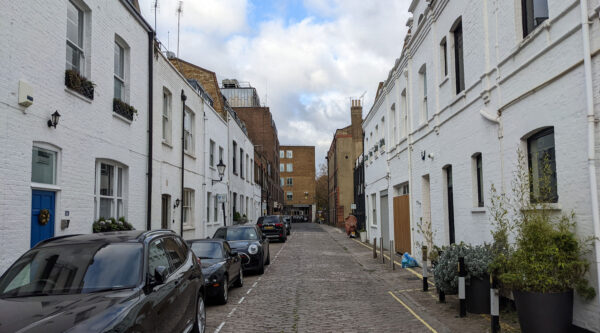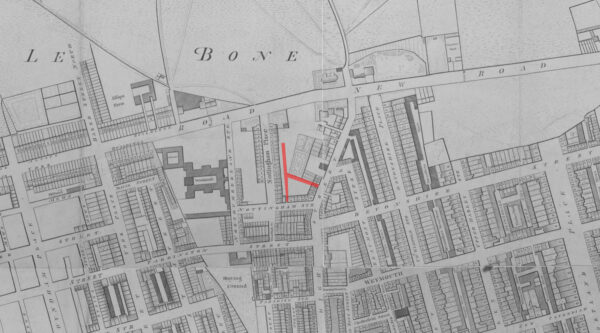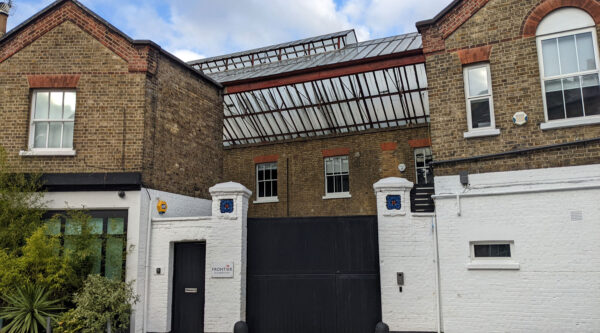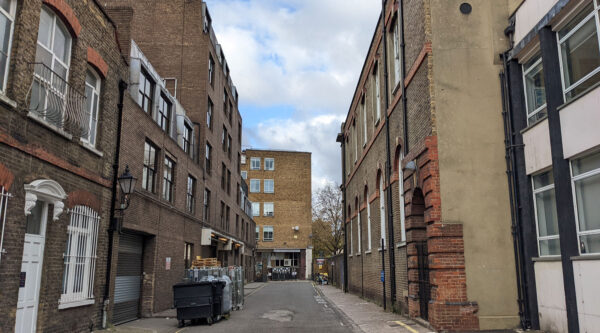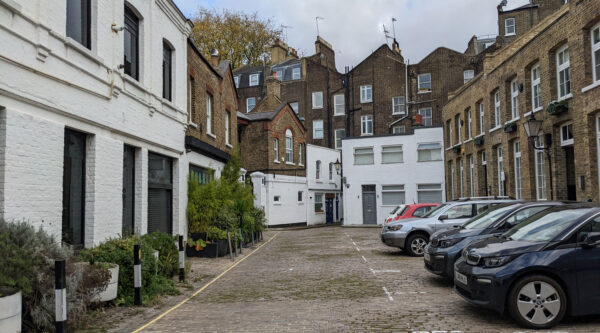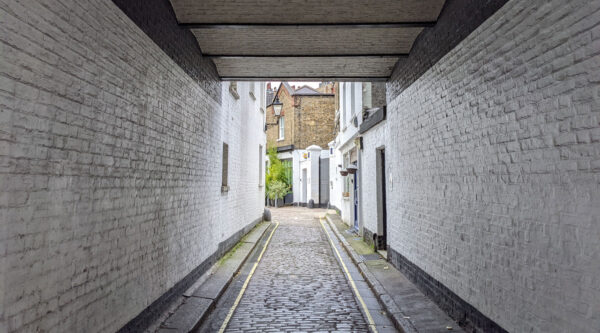This is a quiet set of low-rise mews houses and offices that can be found just off bustling Marylebone. Originally part of the Manor of Marylebone, the land was bought by John Holles, the Duke of Newcastle in 1708, and it was his daughter and her husband, Edward Harley who started early property development in the area a decade later, initially just along what is today Marylebone High Street.
The area around the mews was largely developed by the 1750s. It shows up on Horwood’s map of London, but the mews themselves are still mainly fields. Notable is that the map shows gaps in the houses where the mews entrances are today, so the developer is presumed to know they would be filling in the fields eventually.
They didn’t remain fields for long, as the area shows up in Greenwood’s map as fully developed just 30 years later, although was originally been called Nottingham Mews after the road to the west of the mews.
It was renamed Oldbury Place in 1892, and by now was largely used for light industry. As with so many mews, the light industry has largely vanished from the place, being replaced with housing.
Today, the alley has two entrances, and the one off Marylebone High Street is through a covered passageway along with a cobbled (setts) road into a classic mews looking space, lined with low-rise former industrial buildings that have mostly been turned into expensive houses.
If you look to the left is a low rise looking row of brick buildings with tall ground floor windows, and London’s oldest lockmaker, Bramah was based in here. Joseph Bramah, born in Barnsley in 1748 is reputed to have walked to London to take up work as a cabinet maker, but later, working with a toilet installer patented an invention that helped prevent loos freezing in winter.
He made his first lock in 1784, and the company became famous for how difficult the locks were to tamper with. A challenge lock he created that resisted being picked for 67 years is now in the Science Museum.
The mews location was home to the locksmiths for 103 years, only moving out in 2014, as their former workshop has succumbed to the same fate as other industrial mews buildings — and is now a set of recently renovated apartments. Prices start at £5.65 million.
Opposite it is a rather nice retention behind a set of high walls where you can see the remains of the previous industrial occupant with their glazed factory roof.
At the northern end of the mews, one side is very modern and turns out to be the back of the Princess Grace Hospital. On the other side with its high windows is the former St Marylebone Central National Schools — now the St Marylebone Church of England school.
If you head south, the second entrance to the alley is a wide open road, taking you back out to busy Marylebone.

